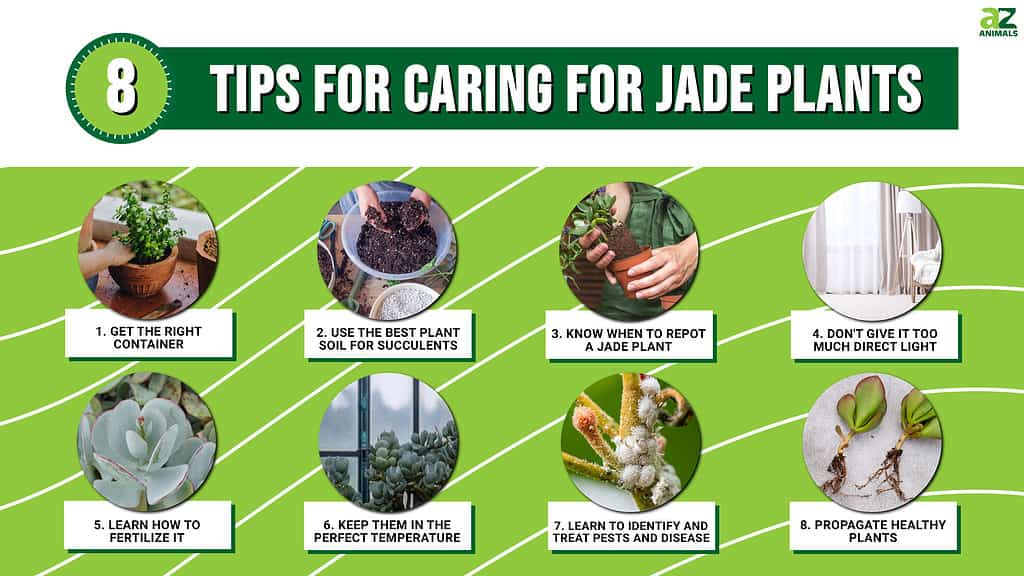
Popular jade plants Crassula ovata are easy to care for, and they look amazing with their thick, shiny green leaves. Many species and cultivars exist, but in general, they all need watering in the same way. Let’s discover jade plant care and answer the question, “How often do you water a jade plant?“
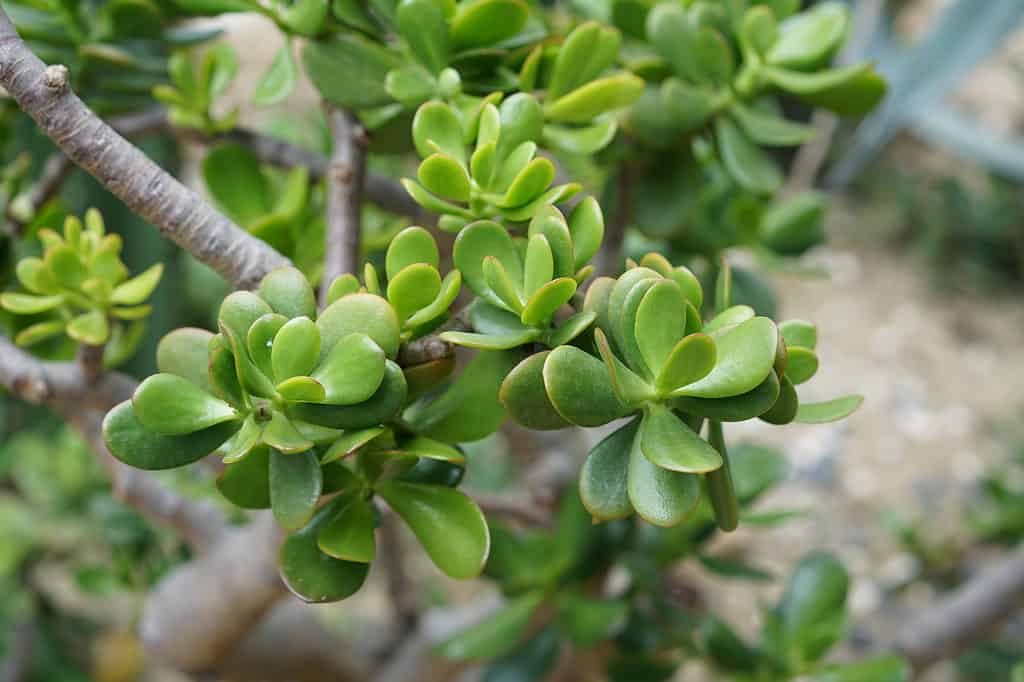
Popular houseplant jades have thick succulent leaves.
©iStock.com/Wirestock
What Is a Jade Plant?
It’s an evergreen succulent plant that can live up to 70 years with the right care. Jade plants grow very slowly. Even in top-notch conditions, they’ll only grow two inches annually. Long-lived jade plants top out at six feet outdoors but chiefly stop growing at around three feet inside.
Although they’re beautiful plants, they’re dog and cat toxic, so it’s always best to keep them out of the reach of pets that like to chew.
Native Range
Jade plants are native to the eastern cape and KwaZulu-Natal regions of South Africa, but they’re grown worldwide as houseplants and outdoors in tropical and subtropical climates. In the wild, jade plants grow in forests, fields, and sandy slopes.
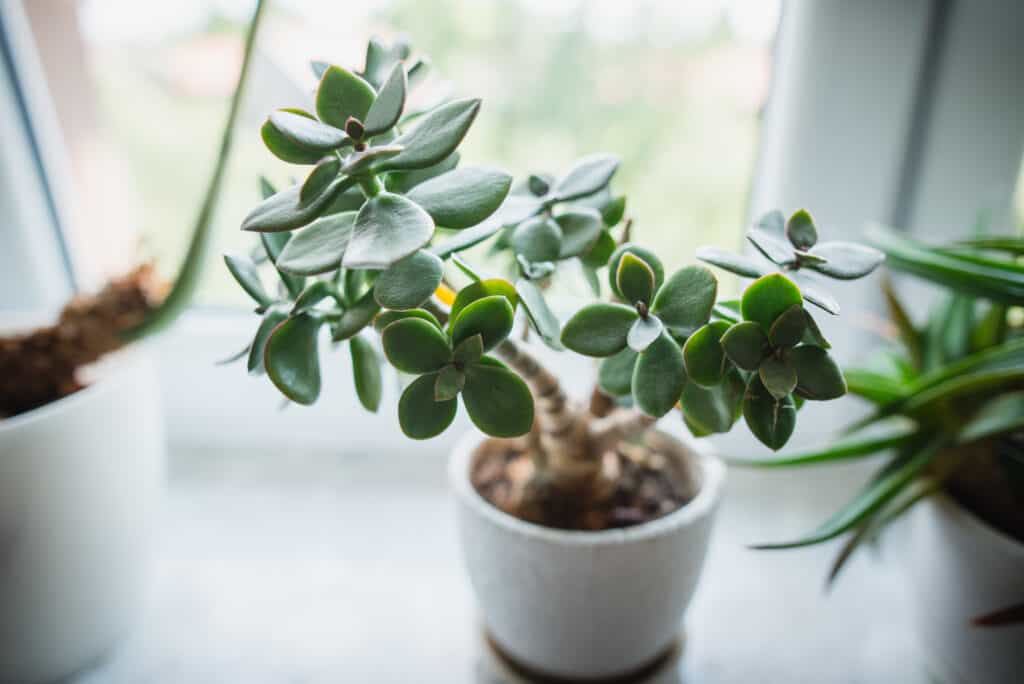
Jade plants are native to South Africa’s fields, forests, and slopes.
©Jus_Ol/Shutterstock.com
Appearance
Jade plants look like little trees with thick woody stems and fleshy green oval leaves on irregular branches. Their fleshy leaves evolved to store water, which gives us an indication of how often they might need watering.
Bright green leaves grow in opposing pairs along each branch and contrast nicely with its gray-brown trunk. A jade plant always grabs attention wherever you choose to put it.
Flowers
Mature jade plants kept in good condition bloom small pink or white star-shaped flowers. Its flowers form blooms from many tiny little flowerheads, and they produce a wonderfully sweet scent.
Unlike most plants, jades flower at the beginning of winter when the colder nights and short daylight hours stimulate production.
Cultivars
Jade plant cultivars number in the hundreds, but several deserve a special mention:
- Hummel’s Sunset holds the Royal Horticultural Society’s Award of Garden Merit. Its fleshy evergreen leaves margined with red and tipped with yellow make it highly popular with collectors.
- Jade Silver Dollar with its silver-blue leaves and deep red margins.
- Jade Gollum with unusual fat finger-like leaves with red tips and pink winter flowers.
- Jade Moon Glow is covered in small white hairs that give it a shimmery silver shine.
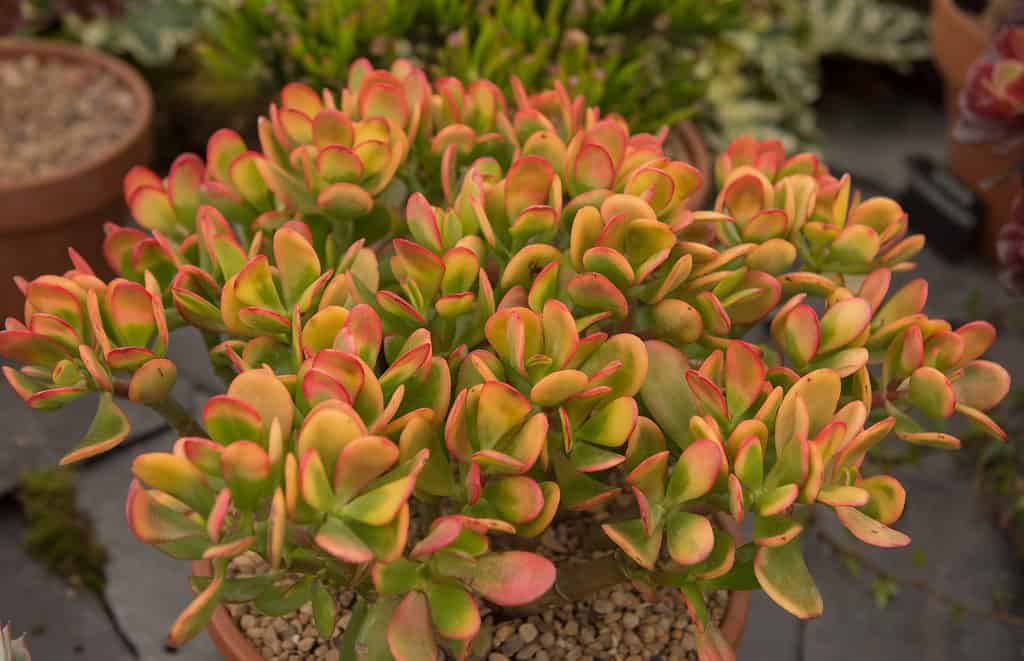
Jade plant Hummel’s Sunset is a popular RHS AGM cultivar.
©Peter Turner Photography/Shutterstock.com
Jade Plants’ Many Names
Crassula Ovata jade plants are commonly called friendship plants, lucky plants, money trees, and money plants. Its many names come from the practice of feng shui. Round foliage jades are described as money trees due to their coin-shaped leaves, whereas heart-shaped ones are called friendship trees. When any species or cultivar of jade is gifted, it’s considered lucky, hence the name lucky tree.
How Often Should You Water a Jade Plant?
Learning about jade plants’ native habitat and growing conditions give us good indications about their watering requirements.
This succulent plant grows on well-drained sandy slopes and stores water in its fleshy leaves. It’s used to going without water for some time, followed by a large drenching, which it stores up. This means it doesn’t need frequent water. The quickest way to kill a jade plant is overwatering. Excess water that it can’t store away creates fatal root rot.
They need less water than large-leaved green plants like peace lilies and Dieffenbachia. Jade plant keepers are often guilty of killing their jades through kindness.
In spring and summer, a jade plant sucks up more water than in winter. How much it actually needs depends on its growing conditions. If it’s positioned in a hot space, it’ll need more than one in-part shade, for example.
Jade plants need to partially dry out before watering. You can check this manually by pushing your finger into its soil. If the soil is damp, no water is required. If it’s dry down to an inch, then it’s time to give your jade plant a drink. In sunny spots, this might be every other week. If you’re not sure, leave it for a few days and try again. Jade plants are better off dry than soggy.
In winter, a jade won’t need water more than once a month because it’s dormant then.

Jade plant soil needs to dry out before it’s watered to avoid root rot.
©Gonzalo de Miceu/Shutterstock.com
How to Water a Jade Plant: 8 Critical Care Tips
How you water a jade plant is just as important as how often it’s watered.
By far, the best way is watering from beneath. Sit your jade in a bowl of tepid water for half an hour. This enables soil saturation, and the jade will suck up what it needs from the wet soil.
After half an hour’s soak, place your jade plant on the draining board so excess water can run off. This bit is really important because consistently saturated soil rots out roots. Don’t ever let your jade sit in a pot of water for days on end.
So, that’s the watering sort out, what else keeps a jade plant in rude health?
1. Best Container for a Jade Plant
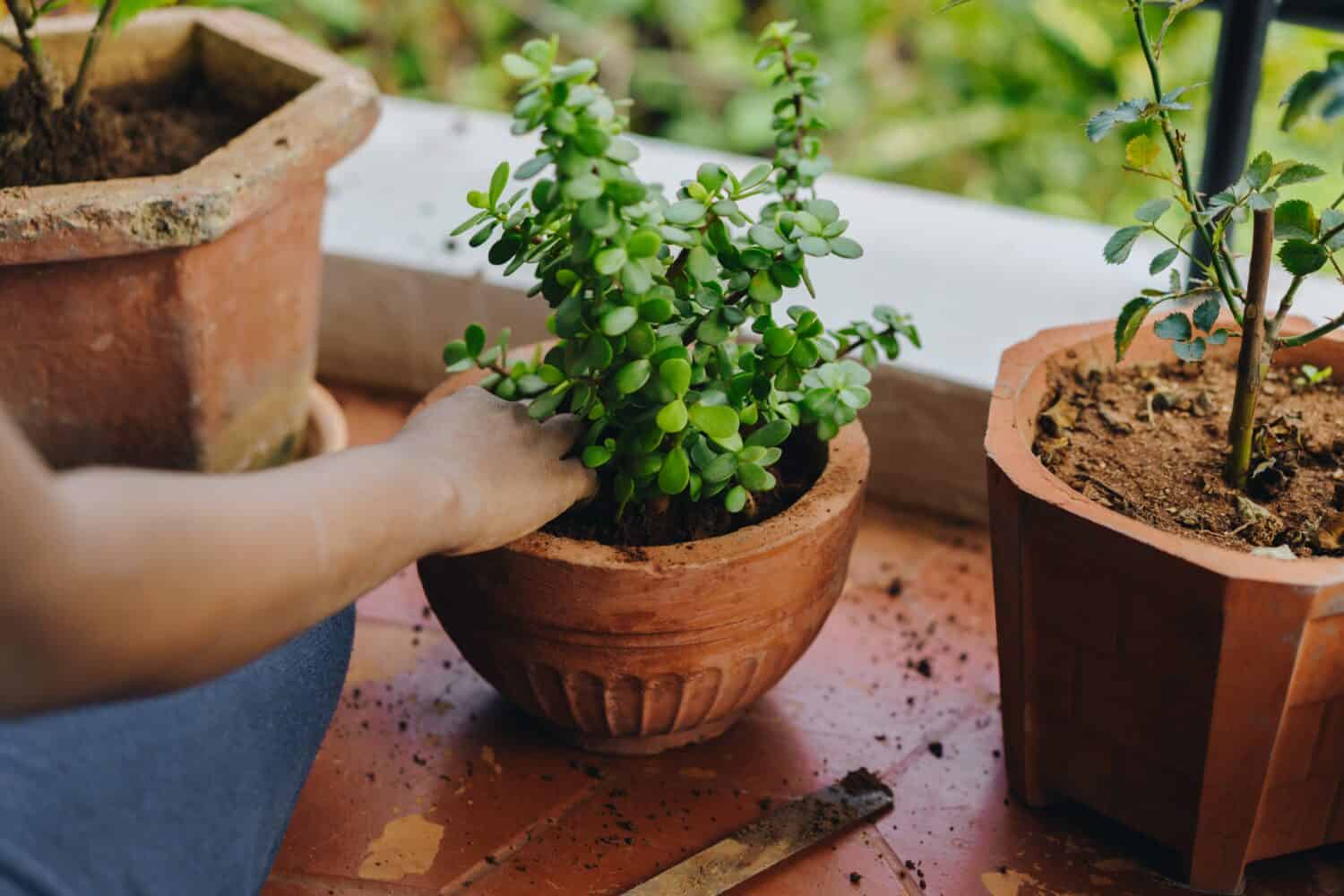
Jade plants like to be a bit rootbound – so a four-six-inch non-glazed pot is good for young plants.
Image: Sahana M S, Shutterstock
©Sahana M S/Shutterstock.com
Jade plants have small and shallow root systems, so they do not need a large container. They prefer feeling slightly rootbound, and smaller pots mean less excess water hangs around to rot its roots. A four-to-six-inch pot works well for younger plants, but as they grow, jade plants become top-heavy, so a heavy container is best to avoid toppling.
In terms of material, an unglazed clay pot is best because it allows excess moisture to evaporate through the walls. Keeping jade plants healthy is all about getting rid of excess moisture ASAP.
No matter what material you choose, a jade plant’s container must have a drainage hole.

Tall jade plants need a heavy container to prevent toppling.
©svf74/Shutterstock.com
2. Best Jade Plant Soil
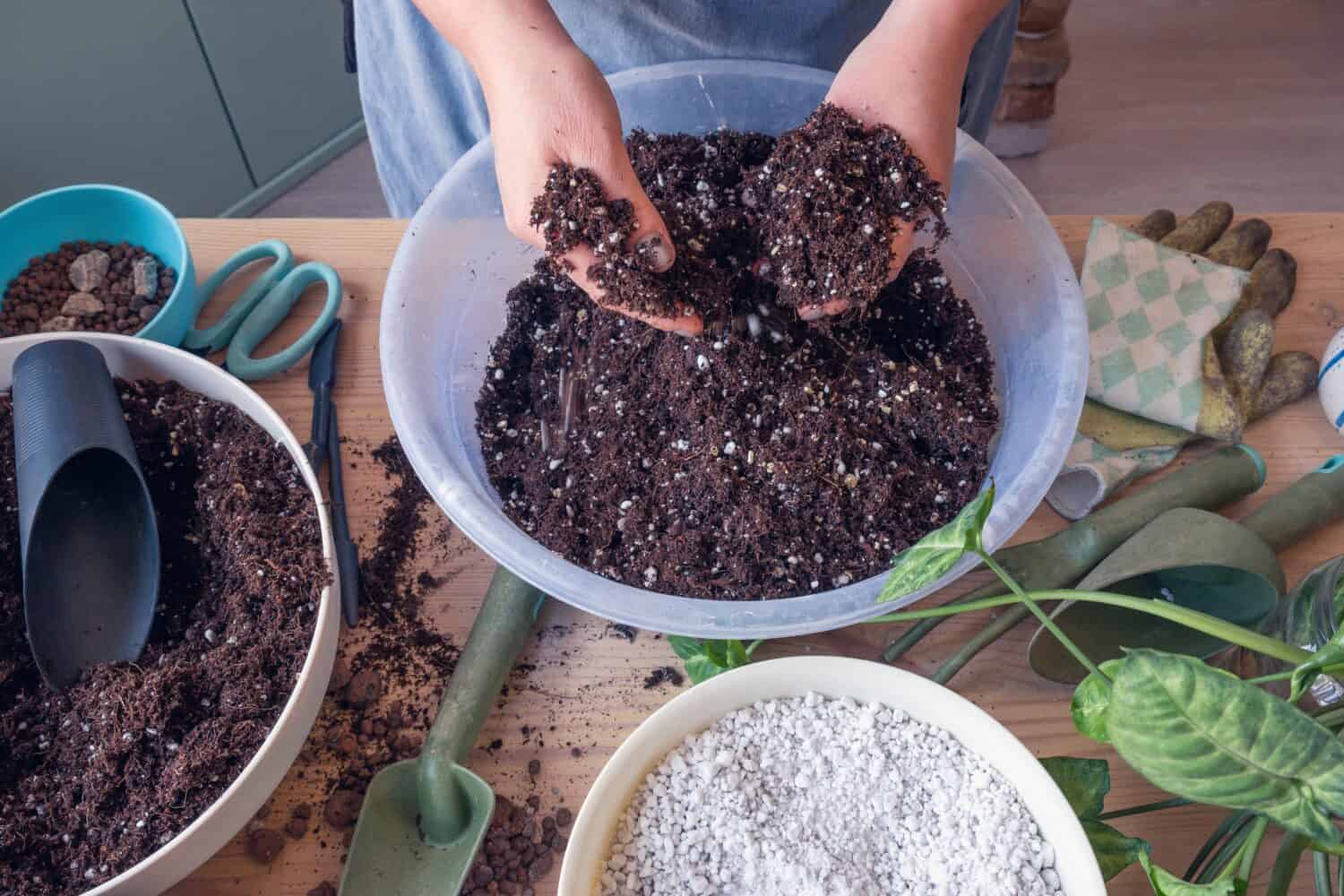
MIxing perlite with potting soil with potting soil improves drainage for succulents.
Image: Cem Selvi, Shutterstock
©Cem Selvi/Shutterstock.com
It’ll come as no surprise that succulent jade plants need loose free-draining soil, so water can quickly drain from their roots. A succulent potting mix is best, but you can make your own from a 50/50 mix of household potting compost and perlite.
Perlite is important because it creates air pockets and space for water to escape. Hard, damp soil is a disaster zone for jade plants.
One last tip concerning soil — jades prefer neutral to acidic potting mix, which is how ready-made succulent potting mix is presented.
3. Repotting a Jade Plant

When you see roots peeking from the surface – it is time to transplant to a bigger pot.
Image: Krichevtseva, Shutterstock
©Krichevtseva/Shutterstock.com
Jade plants don’t need repotting as often as large-leafed foliage plants because they’re slower growing. They can happily live in the same pot for several years if the top inch or so of soil is replenished. However, when you spot roots peeking from the surface, it’s time to upgrade. Here’s how:
- Make sure your jade is dry.
- Gently pull the jade from its pot. Run a knife around the edges to loosen its roots if necessary.
- Tap old soil off and remove any dead or rotting roots. If you spot rotting roots, treat them with a fungicide.
- Place it in the new pot and backfill the edges with fresh succulent potting mix.
- Leave it for a few days before watering to avoid any rot complications.

Repot jade plants when roots emerge from the drainage hole or surface soil.
©HD Photographer Pro/Shutterstock.com
4. How Much Light Does a Jade Plant Need?
Light is very important to a jade plant. They hail from sunny South Africa, so no surprise they need a sunny spot. A south or west-facing window sill is perfect.
Jades need around six hours of sunlight each day, but the light must be indirect. Direct sunlight, magnified by a window pane, scorches their succulent leaves. Use a net curtain to block direct light, or position your jade further back.
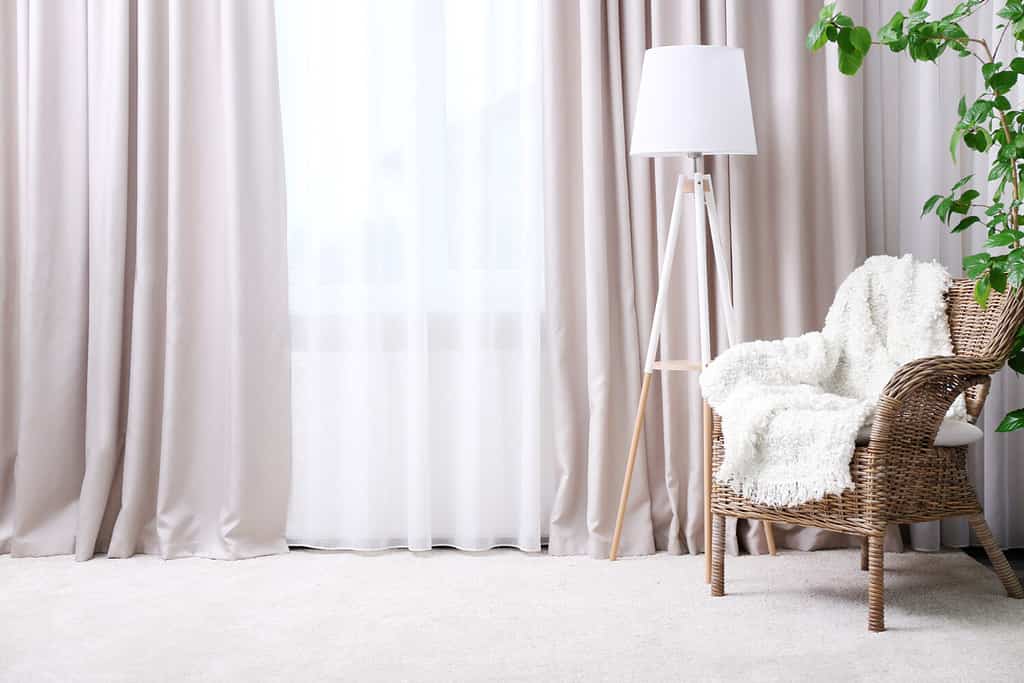
Net curtains can prevent sun scorch damage to succulent houseplant like jades.
©Africa Studio/Shutterstock.com
Watch for seasonal changes that mean sunlight that didn’t hit the jade plant in spring scorches in mid-summer.
Jades that are not receiving enough light will react by growing “leggy.” This creates a long stem with leaves spaced far apart. If your jade appears leggy, it needs a brighter spot. A good way to check is by examining its leaves. Happy jades blush a red tint on their foliage margins.
Be sure to turn your jade plant a ¼ spin each week so all sides receive enough light. If you don’t spin it, you’ll find one side grows faster and looks healthier.
5. How to Fertilize a Jade
Slow down and go easy with fertilizer because jade plants aren’t keen on it. Too much or too strong fertilizer burns its roots, which leads to the root rot we’ve come to fear.
That said, any plant in a container eventually uses up its available nutrients, so fertilizer is required. Jade plants do not need fertilizer in their dormant winter months, but in spring and summer, when they’re actively growing, a very weak half-strength cactus fertilizer applied every four weeks is sufficient.
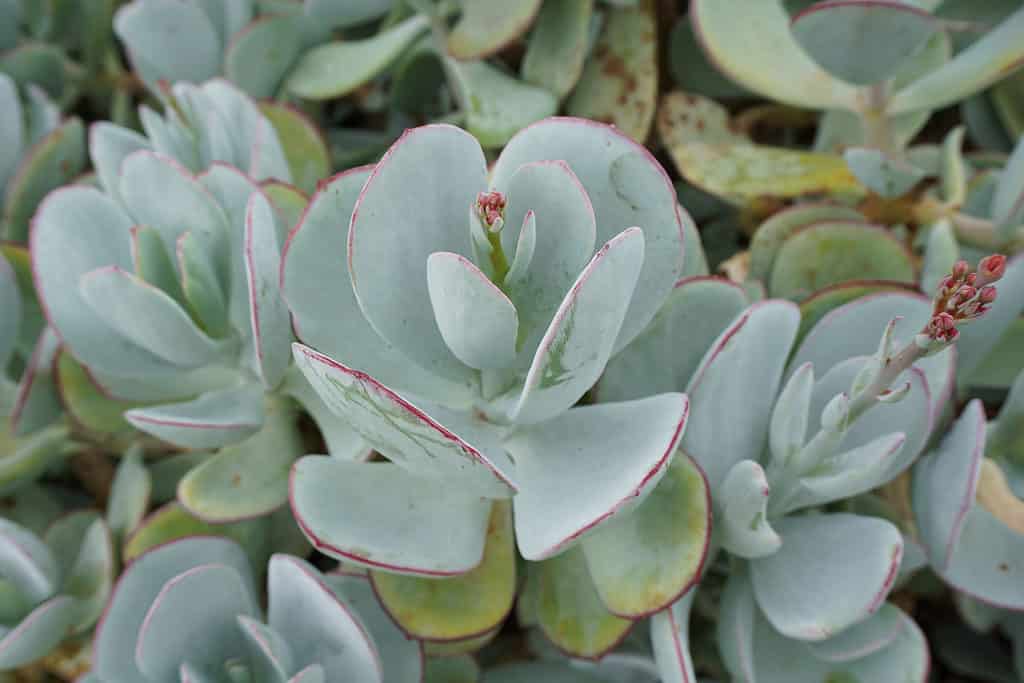
Give houseplant jades very weak fertilizer each month in the growing season.
©Trish Jose/Shutterstock.com
6. Best Temperature for a Jade Plant

Jade plants can be placed in windows that aren’t sunny and are not opened frequently.
Image: Bridget Moyer, Shutterstock
©Bridget Moyer/Shutterstock.com
Sunny South African native plants need warm temperatures. In general, a centrally heated house is warm enough, but consistent drafts, such as a frequently opened window or near an AC unit, will burn a jade and prevent growth.
Its preferred temperature range is 65 to 75 degrees Fahrenheit and in winter dormancy it can fall to around 50, but any cooler and it just won’t grow.
7. Pests and Disease: Troubleshooting
Like most plants, jades are subject to annoying pests and disease infestation, but most are treatable. Here’s what might like to feast on a juicy, succulent jade and how you can see it off.
Scale insects: The most common jade plant pest, they cause foliage deformation. Kill them by rubbing a Q-tip covered in rubbing alcohol over the insects and into all the nooks and crannies on your plant. Keep going a few days after you think they’ve gone to make sure the eggs are killed too.

Remove scale insects like mealybugs from jade plants with rubbing alcohol on a Q-tip.
©phomphan/Shutterstock.com
Spider mites: Chiefly spotted by their small white webs, spider mites drain a jade plant’s succulent leaves and cause discoloration. Rubbing alcohol is the way forward. It also helps if you regularly wipe the leaves free of dust because of spider mites like a dry, dusty environment.
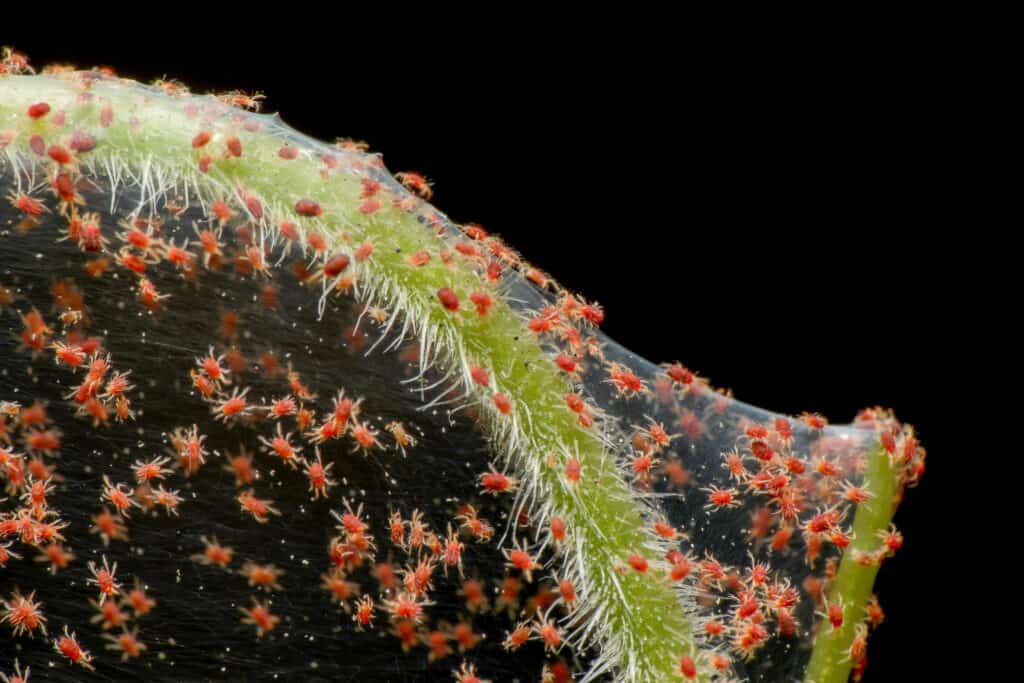
Spider mites create fluffy white webbing on houseplants.
©BirdShutterB/Shutterstock.com
Brown spots: Brown spotting is usually the result of too much water. Allow it to drain for longer after watering and cut down on frequency.
Drooping foliage: Usually, insufficient water causes droop. Up your watering regime. If underwatering isn’t the answer, check for spider mites and scale bugs.
Dropped leaves: Don’t panic; a jade plant naturally drops its lower leaves as it grows.
Yellowing: A yellow tinge usually indicates too much water. Allow it to dry out and, in the future, cut down on frequency. It may also be the result of insufficient fertilizer in spring and summer.
8. Easy Jade Plant Propagation

It’s easy to propagate jade plants if they are in good health.
Image: Aninka Bongers-Sutherland, Shutterstock
©Aninka Bongers-Sutherland/Shutterstock.com
If you’ve done a top-notch job of watering your jade plant and it’s looking healthy, you can propagate baby jades from it.
Jade plants are notoriously easy to propagate, so it’s worth trying. All it takes is one leaf!
Here’s how:
- Wait until summer.
- Take a two to three-inch cutting just above a leaf.
- Leave it to dry out on a sunny windowsill (yes, really!).
- Once the end has scabbed over, push it into the succulent potting mix.
- Water until damp and keep the water evenly moist but not soggy.
Another way is to cut off a leaf (with its stem intact) and place it on succulent potting mix to dry out. Keep it damp; amazingly, the leaf will sprout roots without being buried!

Jade plants are easy to propagate from stem or leaf.
©Sergodef/Shutterstock.com
Jade Plant: How Often Should I Water It?
Let’s re-cap our original question, how often do you water a jade plant?
The answer is when the soil has dried out down to an inch or two. If it’s dry, soak it in a sink of water so it can drink from beneath. Drain it thoroughly and wait for the soil to dry out again. Depending on the environment, this might be once a fortnight or less.
The biggest killer of jade plants is overwatering and leaving them to sit in a saucer of water. This rots their shallow roots and kills them from below. If in doubt, leave your jade drink-free for another few days.
The photo featured at the top of this post is © Olga Miltsova/Shutterstock.com
Thank you for reading! Have some feedback for us? Contact the AZ Animals editorial team.







